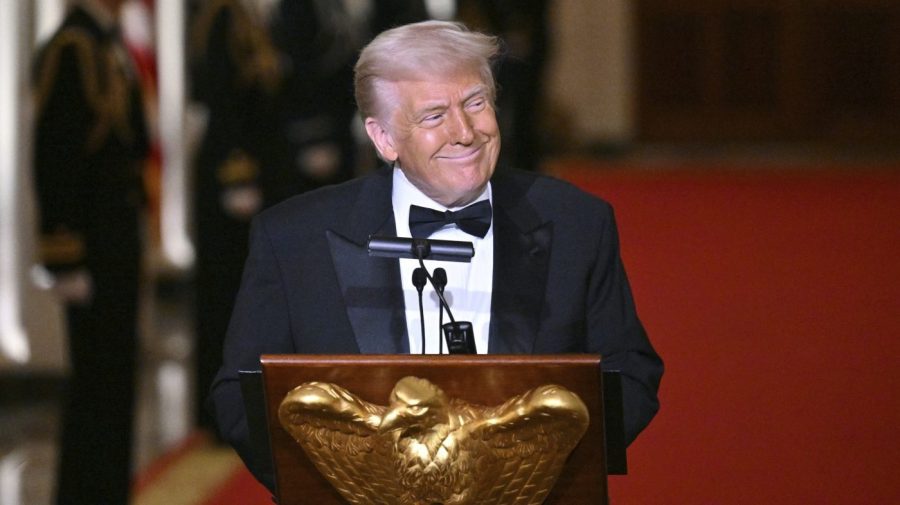Viewers can expect President Trump to speak for well over an hour when he addresses lawmakers in the Capitol on Tuesday, if he sticks to his track record.
Trump will take to the House floor at 9 p.m. for the first joint congressional address of his second term after being out of office for four years. A president’s first address to Congress at the start of a new administration isn’t considered a “State of the Union” speech.
Trump’s annual congressional speeches averaged about an hour and 20 minutes during his first term from 2017 to 2020 – the longest for any president since at least the 1960s, according to The American Presidency Project at the University of California Santa Barbara.
His first joint address to Congress eight years ago was his shortest, clocking in at one hour and 10 seconds. His longest was in 2019, when he spoke for one hour, 22 minutes and 25 seconds.
Online oddsmakers have put the betting line for the length of Trump’s upcoming speech at one hour and 24.5 minutes.
President Biden spoke, on average, an hour and seven minutes when he addressed Congress the past four years, according to the project’s researchers. President Obama’s speeches over his two terms averaged little more than an hour, while President George W. Bush’s yearly addresses clocked in at about 52 minutes, on average, during his back-to-back terms.
On the campaign trail and at official events, Trump has been known to go off script and continue speaking at length. His inaugural address in January, which lasted about 30 minutes, was twice as long as the speech he gave after he was sworn into office in January 2017.
Trump is expected to tout the sweeping moves he’s made during his first month and a half back in office, with no shortage of topics linked to his successful reelection campaign, including immigration and border issues, international conflicts in Gaza and Ukraine and efforts to overhaul the federal government and increase tariffs.
The federal government also is barreling toward a shutdown, with no spending plan in place past March 14.
Thousands of federal employees have faced job losses as the White House’s new Department of Government Efficiency (DOGE), championed by tech billionaire Elon Musk, has sought to cut government waste.
Border crossings are down, and deportations of migrants who have been in the country illegally are up.
Trump’s recent meeting with Ukrainian President Volodymyr Zelensky last week sent international shockwaves with a threat to the U.S.’s continued support for Ukraine in its war against Russia’s invasion.
Trump’s recent tariff hikes on goods coming from Canada, Mexico and China have prompted retaliatory increases on some goods coming into the U.S.
Trump, a former reality television star, has plugged the address in recent days, urging people to watch. A recent CNN poll conducted by SSRS found 47 percent of Americans approve of the job Trump’s done so far since returning to the White House.
Trump’s first speech in 2017 was noted for having a more unifying tone than his populist campaign and dire inaugural address. About 48 million people tuned in to watch on television, with more streaming online. At the time, Trump was facing sagging approval ratings and adjusting to his first time in elected office.
“I am here tonight to deliver a message of unity and strength, and it is a message deeply delivered from my heart,” he said after recognizing Black History Month and the “path toward civil rights and the work that still remains.”
By contrast, he spent his much of his 2024 campaign denouncing efforts to advance diversity, equity and inclusion.
Trump also used his 2017 address to describe his hopes for 2026, when America celebrates its Sesquicentennial, or 250th year.
“It will be one of the great milestones in the history of the world,” Trump said of the milestone then nine years in the future. “But what will America look like as we reach our 250th year? What kind of country will we leave for our children?”
Since taking office this year, Trump has again brought up big plans to celebrate the independence anniversary next year.
Presidential addresses to Congress often have produced outside spectacles that made news and occasionally added time.
Former Speaker Nancy Pelosi (D-Calif.) infamously ripped up a printed copy of Trump’s speech as she stood behind him five years ago after its delivery, and female Democratic lawmakers have dressed in white for Trump’s addresses in the past.
Republican Reps. Marjorie Taylor Greene (Ga.) and Lauren Boebert (Colo.) repeatedly interrupted Biden’s 2022 State of the Union address, and Rep. Joe Wilson (R-S.C.) made headlines when he shouted, “You lie,” at Obama during his 2009 address.

